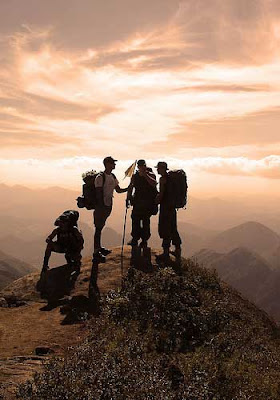Philippines is rich in natural bounties. Its sprawling mountains, green valley trails and breathtaking peaks are its most valued treasures. With that, local and foreign tourists are lucky enough to enjoy the bountiful natural sceneries of the country. One way of taking advantage of the Philippines’ hidden natural beauty is through mountaineering. The uncorrupted outdoor beauties seen nowhere else could leave every mountaineer stunned by the wonders of it.
Just like in different great outdoor locations in other countries, the mountain peaks in the Philippines differ in altitude. Famous mountain peaks are identified according to height and features. High peaks become famous as more mountaineers would explore and gain fulfilment for conquering such heights. While other peaks belonging to average altitudes become famous because of their great historical background or the legends that bind with it, still others are popular because of their unique appearance, location and especially the level of difficulty a mountaineer has to overcome before reaching the peak of success.
Philippine Mountain Classifications
The old system to assess a climb ranges from identifying three (3) aspects only:
1. Level
2. Elevation
3. Days required in completing the adventure (ascent and descent)
However, this system is not as effective as it does not precisely identify which peaks are difficult or easy. This sometimes can cause unexpected hazards due to unpreparedness.
Recently, experienced mountaineers are adopting a new system to gauge climbing difficulty for a particular mountain peak:
Difficulty Scale (9 Grade System) – mountaineers grade the mountain peaks, and estimated results are obtained by comparing one peak to another. This scale also includes lengths of hike, travel time from jump-off point, ascent, and arriving at the peak itself as well as the extremes of its environmental condition.
Major/ Minor Assessment – this is the oldest classification used by local mountaineers and is still part of the new system. This is done by considering the trekking hours and the amount of efforts to exert. If a certain mountain peak can be hiked for 4-5 hours day trip with less effort, it falls under Minor classification; Major Climbs usually take more than that duration.
Trail Classification – research source states, this is a universally-recognized, absolute scale.
1 – Walking (easy stroll)
2 – Hiking along a path/rugged terrain
3 – Scrambling (using hands for balance)
4 – Climbing easy cliffs but with enough drop off- beginners should be roped.
5 – Using free hands as climbing method
6 – Very difficult and need to use artificial method
These classifications comprise the “specs” of the climb. Such classifications will increase awareness in the part of the mountaineers before delving into the Philippine wilderness. Even foreign mountaineers can have at least a head start on what to expect in a particular climb. Although international scales include other aspects like the number of calories and energy needed for each climber, other local mountaineers in some areas do not necessarily follow this requirement.
Undoubtedly, a real adventurer is more interested and eager to conquer the country’s most challenging and most famous mountain peak. The more challenging, the more adrenaline rush and that is for a total of a once in a lifetime experience!

No comments:
Post a Comment